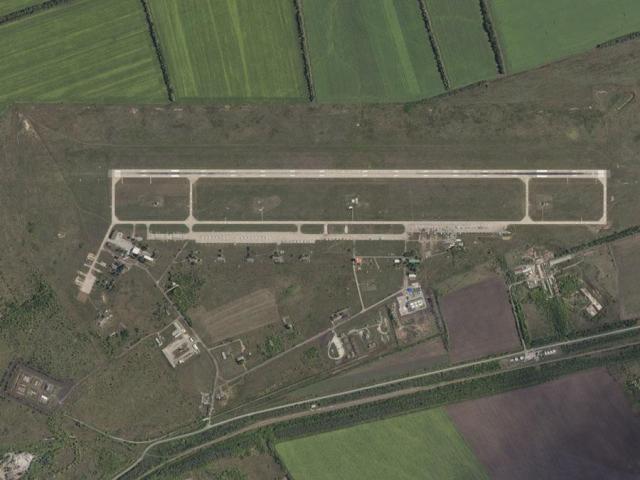
Ukrainian promotional material suggested that the "rocket drone," called Palianytsia, will have a range of 700km, and could bring around 250 Russian military targets within range, opening a new phase of the air war.
Ukraine believes this new drone technology is a necessity to combat recent Russian advances, since its allies still restrict use of long-range weapons to occupied Ukrainian territory, rather than in Russia itself. As the new rocket drone is not supplied by Ukraine's allies, it would not have to comply with these restrictions.
Drone technology has been hugely significant through the war. And the impact of the Kremlin's ability to use drones to devastating effect has been clear over in recent days, and has shown Ukraine's need for a new approach.
On Aug. 26, Russia launched 109 Iranian-built Shahed drones alongside 127 missiles aimed at incapacitating Ukraine's power grid. There were strikes in at least 15 Ukrainian regions, causing power cuts and water shortages across the country.
At least five people were killed and 30 injured. A day later Russia launched another wave of drones also aimed at critical infrastructure and civilian targets.
Both Russia and Ukraine are using one-way attack (OWA) drones. Unlike most armed drones, which drop one or more bombs and return to their deployer for further use, a one-way attack drone (also referred to as a kamikaze drone) flies to its target and detonates on or above it, destroying the drone in the process. The long-range models used by both nations usually resemble a small aircraft with a wingspan under 10 meters.
Ukrainian OWA drones struck a Russian airbase in Volgograd on Aug. 22, starting a large fire and secondary explosions from munitions stored at the site. Ukraine has been using long-range drones to target Russian airbases, industrial sites, and oil infrastructure for months.
Russian authorities have also been scrambling to deal with drone attacks, putting more air defense systems around Vladimir Putin’s private residence and erecting nets around refineries hoping to catch an incoming drone.
Why are OWA drones so important?
Military forces have used drones for decades, but OWA drones are a particular and developing threat. As I outline in my recent study, OWA drones can use inexpensive navigation systems to strike targets hundreds of kilometers away with relative accuracy.
They have smaller warheads and are usually slower than traditional missiles, but they are simpler and cheaper to manufacture in bulk. This means that a weapon with extraordinary range and precision is now available to countries (and armed groups) that would have struggled previously to build and maintain a fleet of missiles.
Both Ukraine and Russia started adopting OWA drones in the summer of 2022. Russia's first major drone attack was in October 2022, but Ukraine had used them earlier.
In June 2022, an improvised OWA drone, possibly made from a modified commercial drone bought online, struck a Russian oil refinery in Rostov, causing significant damage.
Creating advantage
Until late 2023, Russia's use of drones was significantly larger than Ukraine's. Russia's advantage was that they could import their Shahed drones from Iran and later produce them under license in their own factories.
In 2023, Russia launched thousands of drones at Ukraine's civilian infrastructure including at energy substations and grain silos. The drones, along with Russia's missiles, led Kyiv to ask for air defense assistance from its allies and adopt innovative ways, such as acoustic censors, to shoot them down without running short of ammunition. Ukrainian companies were also developing their own OWA drones to strike back.
Ukraine has to rely on drones it has built itself or bought from private contractors to avoid restrictions on how weapons supplied by its allies are used on Russian territory. They are often aimed at Russia's defense and oil sectors. At the end of 2023, Ukraine began an ambitious drone campaign aimed at striking oil facilities (an enormous source of revenue for Russia), airfields (which host aircraft and munitions used against Ukraine), and even the factories where Russia produces its drones.
OWA drones are easy to make and proliferate compared to missiles, and are starting to be used widely. The UK has had to deal with OWA drones twice in 2024 when protecting vessels from Houthi attacks in the Red Sea and helping blunt Iran's drone and missile attack on Israel in April.
Facilities with U.S. personnel across the Middle East have also come under attack from OWA drones launched by militant groups. Even advanced military forces will face similar challenges to Russia and Ukraine, such as shooting down large numbers of drones without running out of air defense missiles.
In March, the Royal Navy intercepted Houthi drones by using Sea Ceptor missiles, which are far more expensive than the drone they intercepted and sorely needed to intercept other threats like Houthi missiles.
For armed forces worldwide, the advancement of OWA drones, and other drone technology, will increase the costs of air defense. They will need to invest in more kinds of counter-drone systems, while maintaining the air defenses they already have to defeat traditional threats such as hostile aircraft.
Defense systems that work against drones (such as lasers) may not be useful for intercepting a missile. Consequently, layered air defenses will be needed to ensure any kind of threat is defeated before it reaches its target.
The U.K., for instance, is in the middle of rethinking its air and missile defense because of how drones and other standoff weapons are used by Russia and Ukraine.
Drones, and drone technology, have changed the rules of warfare globally, as well as in Ukraine, and will continue to do so. Armed forces around the world are already scrambling to keep up.
-------------------------------------------------------------------------------------------------------------------------
Marcel Plichta is a PhD candidate in the School of International Relations at University of St. Andrews in Scotland.
This article was republished under a Creative Commons license with The Conversation. The views and opinions in this article are solely those of the author.
https://theconversation.com/how-drone-attacks-are-changing-the-rules-and-the-costs-of-the-ukraine-war-237409
Copyright ⓒ Aju Press All rights reserved.

